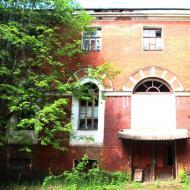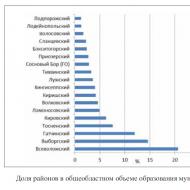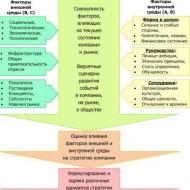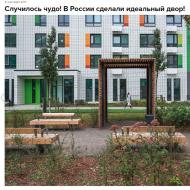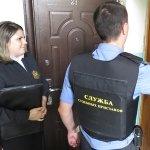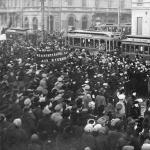
The village of Medved Novgorod. In the outback barefoot: the rich history of the village of Medved
Description
The work was used by Ilona Vasilievna Kuznetsova, a student at the St. Petersburg University of Culture and Arts
The history of the village of Medved.
Bear is our legendary village,
Legend and history have been arguing for a long time.
But no matter what happened there - from the Neva battles
Seven and a half centuries have already passed.
Nevsky himself and his retinue visited here,
A bear attacked the prince while hunting.
And that prince said: “So be it, so it is.”
Let the Bear pass by the graveyard.”
The village of Medved is one of the oldest settlements in the Shimsky district.
There are many legends about the origin of the village. One of the researchers of the Novgorod land Yaromenyuk I.I. writes that Bear was previously called “Mishka” and was the ancient capital of the Ilmen Slavs.
North-west of the Bear, chronicles of the 12th century mentioned the stronghold of the Bear's Head (a city in Livonia), for which there was a struggle between the Novgorodians and their western opponents. This is where the name of the village Medved came from, this is the opinion of Novgorod archaeologist V.S. Peredolsky.
In the census books of the Shelonskaya Pyatina for 1498-99, the Bear churchyard with lands assigned to Staraya Russa was first mentioned. The Bear churchyard has been mentioned in chronicles since the 13th century. The inventory book of the early 16th century, around 1510, noted the village of “Old Bear” on Mshaga next to the “Bear churchyard.” A detailed description of the graveyard has not been preserved. But he was in close connection with the portages from Mshaga to the Luga River, where Princess Olga determined “rents and taxes” back in 947. So we can conclude that the Bear churchyard could have been formed even then. Ancient origins The bear is confirmed by settlements and hills. During excavations, bones and teeth of bears were often discovered among the burials. Perhaps this suggests that the bear in these parts was considered a sacred animal.
Local legends connect the origin of the village with the hunting grounds of Alexander Nevsky. There is also a legend: that in the vicinity of Bear there were hunting grounds of Alexander Nevsky. During a hunt, the prince was attacked by a very large bear and in honor of his victory over the beast, Alexander Nevsky ordered the construction of a Church and the settlement to be called “Bear”.
Before Grand Duke Ivan 3, the “Medved volost” belonged to the Yuriev Monastery, a princely monastery in which Alexander Nevsky’s brother Fyodor and his mother were buried near Novgorod. In the 13th century, the volost could be granted by the prince to the monastery, and in the 15th century, Nevsky’s “great-great-grandson” regained this ancient princely possession. The tsarist government “remembered this volost” for centuries, providing it with a special position on Novgorod land.
The flourishing of the village of Medved. Arakcheevsky period.
The inhabitants of Bear were engaged in hunting, farming, beekeeping, mining and processing of swamp ore. Swamp ore was mined along the banks of the Mshagi River, boiled in adobe houses and obtained krichny iron (kritsa - porous iron). But the village gained its greatest fame when it became a military settlement.
The idea of military settlements belongs to Alexander 1. By his order, in 1817, the cruel and despotic Count Arakcheev, who was the favorite of Paul 1 and then Alexander 1, was appointed head of military settlements. Arakcheev, developing the project for these settlements, borrowed a lot from the Austrians. But in Russia they were created not so much to protect the state border, but to save the state budget. Arakcheev wanted to make sure that the soldiers fed themselves, and also gave money to the treasury. The design of the barracks in Medved was carried out by the architect V.P. Stasov. Bricks for construction were made from local red clay. Two large three-story buildings were built, which were connected by the largest arena in Russia. A regimental church was erected inside the arena.
In 1818, the Medvedsky garrison was inhabited by the 1st and 2nd Carabinieri regiments. Soldiers for service in military settlements were collected from all over Russia. The local population was also converted into arable soldiers, sometimes by force. Local residents told how one stubborn man did not want to obey and then, by order of Arakcheev, his plot was cut off from the river and he was forbidden to use state-owned lands. The rebellious one had to submit. And then they served for 15 years, and they had to seriously settle down. The houses of military settlements were built extensively: log houses with a brick base, erected on a cobblestone foundation. The huts were built according to the standard with 24 crowns, with high vestibules, small windows “three on the facade and one in the side wall.” In front of each house, the owner had to plant six birch trees.
From the words of the residents, life for the soldiers in the military settlements was grim. Daily drills, cane discipline, lack of rights. In accordance with the situation, a soldier could be married by force by order of the company commander. A day was appointed for this. In all companies, a decree was read that one soldier from each company was allowed to enter into a legal marriage and remain for permanent residence in the Medvedskaya volost as a military arable soldier. If there are no volunteers, it doesn’t matter. The authorities themselves will appoint the candidate for grooms. At the same time, an order was given to the volost elder in the civil department, so that the brides were prepared, “12 red girls,” and delivered on the appointed day according to the order. After the viewing in the square, the newlyweds were led to the church to the sound of bells, where 12 couples were crowned with one pair of crowns. This is probably where the expression “crowned with one crown” came from. At first, these couples lived in the barracks, in rooms that were separated by plank partitions. But the estate plots were already sized for future new settlers. This is how their life began.
Military activities consumed a lot of time; there was no time left for housekeeping. The villagers became poor. It was especially difficult for the children of soldiers. From the age of 8 they were enlisted in the army. The children were trained by non-commissioned officers in a special school, drilled and severely punished.
There is an interesting story of the relationship between Count Arakcheev and the bourgeois Anastasia Minkina, who was a resident of the village of Medved. The Count really liked her. And soon her husband disappeared and sank into the water. Only after Arakcheev’s death did it become known that a poor settler had indeed found his last refuge in the water; in a deep forest lake, with a cast-iron pear around his neck. And the count became more frequent than ever in Medved, even ordering a bridge to be built across Mshaga to please his mistress. This beauty, a former peasant woman, managed to completely subjugate the count. There were many rumors about her cunning and dexterity. But people especially remembered her terrible death on September 10, 1825. Arakcheev moved his beloved to Gruzino, to the estate. For several years, all the servants endured Anastasia’s bullying and torment. She especially tortured her close maids: the girl Paraskovya Antonovna, who, on the orders of “Nastenka,” was flogged 2 times a day, and the older girl Anisya. Her brother, the young cook Vasily, was very worried about his sister Paraskovya. He thought for a long time and soon said to his sister: “I will stab her, just take it upon yourself, and don’t point at me.” Paraskovya agreed. And so, one day, when the count was away, Vasily entered the bedroom and stabbed Anastasia to death. The punishment was terrible for everyone. Eyewitnesses say that when Arakcheev found out about this, he fell to the ground like a wounded animal and screamed furiously.
Of course, military settlements had both negative and positive sides. Negative aspects: hard and exhausting work, whole life took place according to a strict schedule, the slightest offense was punished with cruelty. Positive aspects: improvement of villages, compulsory training. Among the officers there were many educated and intelligent people who contributed to the education and culture of the village.
At the beginning of the 19th century, residents of the village of Medved (121 households, 986 people), in addition to farming, hunting, mining and processing of swamp ore, were engaged in trade and crafts. Markets were held daily on Saturdays.
Existed: church (stone « Life-Giving Trinity" - since 1799; from 1830 it had a headquarters - Peter and Paul), two schools, a zemstvo hospital, a volost administration, a postal station and a zemstvo horse station.
In the village there were: 6 shoemakers, 3 tailor shops and a hat shop, 4 bakeries, 21 confectionery shops, a grocery shop, 6 bread shops, 2 meat shops, a sausage shop, 5 tea shops, 5 leather shops, 2 handicraft shops and other shops. Two inns, a tavern, a watchmaker and a wine shop. According to the memoirs of Klavdia Ivanovna Matveeva, a resident of the village, there were many merchants and trading people.
List of merchants and large traders who do not have merchant titles
and guilds that have their own business in the territory of the village of Medved:
Gavrilov Mikhail Kuzmich - merchant of the 1st guild, millionaire, had a large trade in flax.
Lyubatsky Vasily Ivanovich - merchant of the 2nd guild, homeowner, had a large store, large trade in flax.
Valebnikov Vladimir Aleksandrovich - had a huge two-story house with basements and storerooms and a sausage production with a store.
Gavrilov Mikhail Mikhailovich - a poor merchant, had a two-story stone house; a manufacturing store was located in the house. Then the store closed, and in its place a tea shop opened, where the owners themselves worked - Mikhail Mikhailovich and his wife Olga Alekseevna.
Alekseev Ivan - had a handicraft tannery, a large orchard, and his children Yakov Ivanovich and daughter Ksenia (Syutya) were given a higher education and they only visited their father during their studies, and after finishing their education they had no contact with their father.
Evstifeeva Maria Ivanovna - had a two-story stone house and lived on income from renting out living space in the house.
Mayevsky Andrey - owned a dishware and hardware store.
Tal Abram Osipovich and Kogan Miron Davydovich (his brother-in-law) had a large manufacturing and haberdashery store. They had clerks and “boys” - students of the trade business.
Dymkin Moisey Semyonovich and his son Samuil - in 1903 they opened a store with the sign “Window glass trade”, but under this sign they sold all food products. They quickly won over customers and within 10 - 15 years they had the largest trade. They skillfully attracted buyers with cheaper goods than others, willingly selling goods on credit. They crushed all Russian merchants with competition.
Druyan Lev (Lepka) - meat merchant.
Stepanov Ivan Ivanovich was a tailor by profession, but had his own two-story house and a small manufacturing store. He was a member of the "Union of the Russian People". An ardent Black Hundred member, he distributed leaflets with the call “save Russia without Jews.”
Mikheev Alexander Fedorovich - had a two-story stone house, a small mosquito shop, where he bought furs and game, sold hunting supplies, as well as gunpowder and shot (father-in-law of the teacher Kalyazin Alexander Petrovich).
Savinsky - had a small manufacturing store.
Kogan Davyd - had a hat workshop where masters and apprentices worked, as well as a store for men's hats.
Zaputyaev Vasily Vasilyevich - merchant, homeowner, left Medved in 1910.
The Galfonovich brothers (Isaac and Aba) are large meat traders.
Blanket Moses is a meat merchant.
Fominishna - had a wine shop.
Two Kassikov brothers had a bathhouse and a teahouse.
Genrikh Ivan Ivanovich - had a water mill and a shop.
Kuzmin Konstantin Ivanovich - owned a night restaurant.
Martynov - had a forge and a lime factory.
Emelyanov V.V. - maintained a postal station.
Mitrofanov Fedor - had a two-story semi-stone house, a leather shop and a small artisanal tannery.
Zakharov - had his own shop with food and leather goods.
Kokourov Alexander - was engaged in the handicraft production of felted shoes, had a two-story workshop in which his whole family worked. He had a two-story semi-stone house and a garden with a vegetable garden on the steep bank of the Mshagi River.
Revolutionary and war years in the village of Medved.
In 1831, a cholera epidemic swept the country. It coincided with riots in military settlements. In August 1831, thousands of participants in the uprisings of military settlements - rebel battalions from Novgorod and Staraya Russa - were withdrawn through the Bear in August 1831. At the very beginning of the uprising, the prudent district commander, Colonel Trizna, announced to the Medved villagers that cavalry was coming from Little Russia to the Polish theater of military operations, for which it was necessary to prepare hay, and sent them 30 miles away to mow. Thus, he cheated, and the Medved villagers did not have time to take part in the uprising. This worked to the benefit of Trizna and his superiors. He managed to present the matter in such a way that the local villagers were supposedly happy with life and “were far from indignant.” Already on July 27, 1831, the villagers were thanked “for not joining the rebellion.” On July 28, Tsar Nicholas 1 awarded 8 representatives of the Medved battalion 4 gold and 4 silver medals with the inscription “for zeal.” They were inherited and kept in some families even at the beginning of the century. Trizna also received an award, but it soon became clear that he had embezzled 30 thousand government money. For which he was fired. And local villagers for “non-joining the rebellion” were exempted from quitrent and received livestock and household equipment from neighboring rebellious districts. Later, Nicholas 1 came to the village and personally thanked the “faithful regiment”. That’s why they placed a “life-size” bronze king in the village square.
However, soon the legends about the “loyalty” of the villagers of the 5th district dissipated. And the villagers were again subject to quitrent. This was connected with the events of 1917, which also turned out to be very turbulent in Medved.
In March 1917, in front of a large crowd of people, the Tsar’s monument was overthrown by soldiers of the marching companies stationed in Medved.
During the war with Turkey (1877 - 1878) in the village. The bear was a camp for soldiers and officers of the Turkish army, and during the Russo-Japanese War: a camp for Japanese soldiers, sailors and officers (1905-1908).
In the summer of 1906 in the village. The bear fell into the 1st battalion of the Life Guards Preobrazhensky Regiment, an active participant in the first Russian revolution. It became a penal one and consisted of five companies. Each company had a different regime. In the 5th company there was a prison regime. The artillerymen of the Sveaborg fortress also ended up in the Medvedsky disciplinary battalion. In August 1912, the future hero of the Civil War, P.F. Vinogradov, was brought here. He continued revolutionary propaganda in Medved and refused the oath to the Tsar. In 1917, a Council arose in the village, and the second largest Bolshevik organization in the province began to operate. During the Kornilov rebellion, soldiers of the revolutionary 175th reserve infantry regiment took control of Utorgosh, Soltsy, Shimsk. In this zone, counter-revolutionary forces did not reach Petrograd. One of the streets of the village is named after Konstantin Putris. On April 15, 1918, 17 Red Army communists, together with him, a representative of the soldiers’ committee of the 175th regiment, defended weapons warehouses from an attack by kulaks and Socialist Revolutionaries who rebelled against Soviet power. The heroes died, but the counter-revolutionaries were soon defeated. In honor of Vinogradov P.F. and Putris K. streets were named in the village (they still exist to this day). Today, these events are discussed differently and that is their right.
In 1927, the village of Medvedsky district of the Novgorod district became part of the Leningrad region.
Before the war, the village had a flax mill, an outpatient clinic, a dairy factory, a school, a hospital, a library, and a club called “Red October”.
The fascist occupation brought great destruction to Bear. The fighting here was bloody. Already on July 14, 1941, a major counter-offensive of our troops began here. Since the village is located on a hill, the headquarters and observation post were located here. As a result of the battles near Medved, the fascist division 212 SS “Totenkopf” was completely defeated. It was here that the Nazi movement was stopped for more than a month. From the first days of the war, the entire Medvedsky communications center began to work to provide communications services to the units fighting in this sector of the front. And in July 1941, an order was issued to reward signalmen: A.A. Prax, V.P. Gorodkov, A. Solovyova and others. Sergeant Isaev shoots down a fascist plane with a regimental cannon. Three tanks, knocked out by Lieutenant Kravchenko, are burning. In the hell of artillery fire and bombing, military doctor Lopatin saves the wounded, and many other heroic deeds were performed. On August 11, under the pressure of fascist units, our units, having been surrounded, began to retreat. However, the fascists who entered the village for a moment could not imagine themselves as masters of the land. The Medved underground workers took revenge on them. Bridges unexpectedly collapsed under the wheels of fascist vehicles, tires were cut out of the wheels, a fascist fuel warehouse was blown up, and tank workshops burned in the flames of the fire. This was an underground group. These are Alexander and Mikhail Kulikov, Valentina Kuzmina, Anna, Galina and Roman Sharkov, Ivan Zinoviev and Yakov Pashkov. Members of the group distributed anti-fascist leaflets, assisted in escapes from a prisoner of war camp (the Germans set up two camps in Medved: one in the club building, the second in a military camp), and systematically disrupted communications with the garrison. But in the summer of 1943 they were arrested and, after interrogation and torture, shot. In February 1944, Medved was liberated by the 382nd Rifle Division.
Bear's post-war revival was difficult. Here there were: the collective farm "Red Banner" and the state farm "Wave of Revolution". The village was rebuilt again.
Today the village of Medved is a complex historical monument of the Russian people.
The history of the village includes very different aspects of life: the Arakcheev period - military settlements, the suppression of the rebellion and the arrival of Tsar Nicholas 1 in the village, the Russo-Japanese War and three thousand Japanese prisoners of war (events of a hundred years ago still arouse keen interest in both Japan and in Russia), involvement in the revolutionary events of 1917, Komsomol underground activities during the Patriotic War, cultural life of the village (folk theater), labor achievements.
Economic and geographical position of the Medvedsky rural settlement.
The village of Medved is located on the Mshaga River, to the southeast of the municipality there is the Veliky Novgorod - Shimsk - Soltsy highway. The regional center (Veliky Novgorod) is connected by the highways V. Novgorod-Menyusha, V. Novgorod-Pskov, V. Novgorod-Utorgosh, the regional center of the village of Shimsk - Shimsk-Medved, Shimsk-Klevenets, etc. Transport services to the population are provided by Novgorod and Shimskoye passenger motor transport enterprises.
The St. Petersburg - Dno - Vitebsk railway runs to the west of the settlement. The Utorgosh railway station has been operating since 1903.
The area of the Medvedsky rural settlement is 60,988.56 hectares.
There are no industrial enterprises on the territory of the Medvedsky rural settlement, so one of the directions for the development of the settlement is agriculture.
Agricultural production is the basic sector of the municipal economy. Agricultural producers are agricultural producers, peasant farms, and personal subsidiary plots. They grow grain crops, flax, potatoes, vegetables (cabbage, carrots, beets), fodder crops, meat and dairy cattle breeding, pig farming, and poultry farming are developed.
2.1. Natural conditions and resources.
The climate is moderate continental. Precipitation ranges from 540-750 mm per year. Maximum precipitation occurs in summer (38%), slightly less in autumn (27%). The average January temperature is 10 degrees below zero. Winter is moderately mild, snowy, cloudy and moderately frosty weather prevails. Snow cover sets in mid-December and lasts for an average of 90-100 days. Spring is long and cool. Summer is moderately warm (average July temperature +16, +17 degrees) and short; Sometimes there is hot and dry weather. Sometimes the air temperature in summer reaches +34 degrees. The number of hours of sunshine is about 1700 per year. Winds predominate from northwest and southwest.
Thus, the climatic conditions of the village territory are favorable.
Hydrological characteristics.
The widespread dense parent rock, the flatness of the relief, the abundance of precipitation and its weak evaporation determined the uniqueness of the water regime.
The Mshaga River is a left tributary of the Shelon, formed near the Vereteyka tract. The length of Mshaga is 106 kilometers, width is 15-20 meters, the current is weak. It flows into Shelon 19 kilometers from its mouth. It originates in the Luga district of the Leningrad region.
The depth of groundwater in a settlement varies and is completely dependent on the terrain and the nature of the constituent rocks. On the plains and along weak elevations, the depth of groundwater ranges from 1.5 to 6 m; in depressions it does not fall below 1 m.
Engineering-geological conditions.
The Medvedskoye rural settlement is located in the central part of the Shimsky district, part of the Novgorod region in the Ilmen region.
Peat
Peat deposits, recorded by the cadastre of peat deposits in the Novgorod region, occupy almost 25% of the settlement’s territory. The attached map shows the boundaries of explored deposits of industrial importance (area of at least 50 hectares, average peat thickness of at least 1 m). The development of such deposits is possible industrially. It should be noted that large swamps of the settlement that have water conservation significance or are of scientific interest are recommended for protection (Medvedskoe and Severnoe swamps).
Gravel-sand material and construction sands.
Due to the fact that most of the promising areas of these types of mineral raw materials have now been studied in varying degrees of detail, there is no reason to hope for the discovery of new deposits in the settlement. For this reason, the urgent issue is the use of the remaining reserves in the studied fields.
Promising for the search for deposits of local importance is the main terminal moraine ridge of the settlement from the border with the Batetsky district (Nizy station) to the village. Bear and further northeast to the village of Menyusha. This ridge consists of several gently sloping ridges up to 5-7 m high, unevenly washed out and separated by streams and rivers. Most of the area of the ridges is occupied by buildings, roads and arable land, so the prospects for using sand and gravel even if large deposits are found are limited.
On the site with Bear - Menyusha village, the length of the ridge reaches 15 km. and 5-6 m high, 500-600 meters wide, slope steepness 8-10 degrees. In the upper part of the ridge, in a number of places, different-grained sands with a thickness of up to 2.5 m can be traced under the soil layer, lying in the thickness of fine-grained and clayey sands. The sand and gravel material in the sands occurs in the form of lenses up to 1.2 m thick, the gravel content in them is 15-20%, represented by carbonate and crystalline rocks. A significant part of the ridge is composed of a moraine, in which large lenses with a thickness of 2.5-6 m are also found. Sands with gravel have not been studied in detail. In general, within this section of the ridge there may be deposits of gravel and sand materials suitable for road repair.
Landscape characteristics of the territory.
The Ilmen lowland is extremely flat. Altitudes range from 18 to 50 m above sea level. The surface of the Priilmenskaya lowland is very swampy. The rivers flowing through it have shallow valleys, the lakes have low banks.
Relief influences soil formation, since the redistribution of moisture depends on it. In depressions of the relief, water accumulates and waterlogging occurs. There are large swamp areas in the Ilmenskaya lowland. Raised and low-lying swamps are widespread throughout the settlement.
All types of soils are found in the settlement: podzolic, bog-podzolic, sod-carbonate, sod-clay, bog, floodplain-alluvial.
The most common soils are podzolic and bog-podzolic types.
The vegetation of the settlement has retained its natural character only in small areas; in most cases it has undergone modifications brought about by human activity.
In the northern part of the settlement, forests are represented by mixed forests with a predominance of small-leaved species - birch, aspen, alder with a small admixture of spruce; less common: maple, ash, oak.
Low-lying areas of relief with weak surface water flow are usually covered with black alder vegetation. The main vegetation of raised bogs are sphang mosses, cotton grass, horsetail, cranberry, and sedge. Commonly found shrubs include wild rosemary, Cassandra, blueberry, and heather. Tree species include pine and birch. Lowland swamps are dominated by: birch, alder, willow, marsh cinquefoil, meadowsweet, sedge, and green moss.
Institutions and enterprises of the social sphere.
Currently, in the village of Medved there are 1,147 farms and 2,807 people live. On the territory of the village there are:
Administrative center of the Medvedsky rural settlement (Head of the district Guseva M.V.);
Municipal autonomous educational institution "Secondary educational school" p. Bear (Director V.N. Ivanov);
MADOU No. 12 (Tarasova N.V.);
Communications Department (G.S. Koroleva);
Branch of Sberbank (G.V. Kuzmina);
Library (A.N. Levashova);
Museum of Local Lore (N.K. Maslakova);
Pharmacy point "Panacea - N" (N.A. Egorushkina);
Outpatient clinic (L.N. Mironova);
House of Culture (I.E. Gribkova);
Bus station (V.V. Tarasova);
SEC "Medved" (F.G. Grishin);
Chain of grocery and grocery stores.
I already did it at one time. However, these barracks are only part of the buildings associated with the military settlements of the Novgorod province. This Sunday I was able to explore most of these buildings. I started from the village of Medved - the former center of the Medved volost, in which on February 1, 1818, military settlement districts of the 1st and 2nd carabinieri regiments were formed.
In 1823, construction of a barracks complex began in the village. It took quite a long time to build it: the arena was completed in 1827, the church - in 1830. Four three-story stone outbuildings were completed in 1831-1832, the infirmary with services - in 1837, houses for the regimental commander and headquarters - in 1838 ., guardhouse - in 1839 

Individual buildings were erected in Medved later. 


Although the buildings were built according to a standard design, during the construction of military camps of the second stage (in Medved, Novoselitsy and Krechevitsy) noticeable changes were made to the project. Instead of two compact barracks squares on the sides of the arena, two long buildings were built here, so that the plan turned out to be an I-beam. 
The new composition was less harmonious, but was distinguished by greater sanitary, hygienic and technical conveniences in terms of lighting and convenient location of sanitary facilities. 

Unfortunately, not all buildings have survived. It’s especially a pity for the guardhouse, of which only the tower remains, now used as a water tower. 


The regimental temple is the most spectacular part of the complex: 








In 1827, the entire district was transferred to the 1st Carabinieri Regiment (the 2nd Carabinieri Regiment was transferred to Korostyn). 
After the War Settler's Rebellion of 1831, the military settlement system was reorganized. The active battalions of the regiments were separated from their settled part, and the troops in the province began to be stationed. In Medved until the mid-1850s. The headquarters of the Carabinieri Field Marshal Prince Barclay de Tolly Regiment (as the 1st Carabinieri Regiment began to be called in 1833), the Novgorod Battalion of Military Cantonists, and from 1844 the 1st Training Carabinieri Regiment were located. Later, there were reserve battalions in Medved: in the 1860s - the 1st Infantry Reserve and the 3rd Infantry Reserve, and in the 1870s - the 2nd Infantry Reserve. Sapper units were also located here: Grenadier, 7th and 1st reserve sapper battalions, 1st and 2nd pontoon battalions. From 1892 to 1900, the 96th Omsk Regiment was stationed here (half of it, however, was transferred to Ostrov in 1895), and then it was replaced by the 199th Infantry Reserve Svirsky Regiment. 


During the Russo-Japanese War, the barracks complex was used as a prisoner of war camp. As of December 1905, there were 1,777 Japanese there, including one woman - the wife of Major Togo, who shared the hardships of captivity with him. 
Reporters were allowed to see the prisoners, they were allowed to write to their homeland, move freely around the village, and they received a good salary. “Good changes” were also made to their diet: by decree of the Minister of War, it was allowed to replace pearl barley soup with rice for lunch, and millet porridge for dinner with semolina, while the costs were charged to the military fund. After peace was concluded, all prisoners of war were sent home through Germany. 


Later, the barracks in Medved began to be used to house various kinds of disciplinary units. The first to arrive there was the Special Infantry Battalion, a unique part of the Russian Army. In June 1906, soldiers performed in the 1st battalion of the Life Guards Regiment. They put forward a number of demands, ranging from improved nutrition and timely transfer to the reserve, and ending with non-punishment for political beliefs. The soldiers were calmed down without bloodshed, but on June 15, 1906, the battalion was deprived of its guard rights and renamed the Special Infantry Battalion. Its location was the Bear. During the trial, which took place in Medved on October 14-19, 1906, 191 people were brought to trial. 32 of them were acquitted, the rest were sentenced to various punishments, mainly to being sent to disciplinary battalions for various terms. The remaining soldiers were initially supposed to be distributed to other units, but at the suggestion of the Minister of War A.F. Roediger, it was decided to let the battalion disappear as its ranks were transferred to the reserve. 


On May 24, 1907, the Medvedsky disciplinary battalion was formed (which included some of the convicted Preobrazhensky prisoners). It consisted of six companies and was designed for 1,200 soldiers. When prisoners arrived at the battalion, their shoulder straps were removed and they were included in the category of test subjects. They were taken outside the fence only under escort. After serving half the sentence, if during this time the subject did not violate the established order, he was transferred to the category of those under correction, his shoulder straps were returned to him and he was allowed to walk without an escort. 


Since the fall of 1910, the 3rd battalion of the 86th Vilmanstrand Infantry Regiment, transferred there from Staraya Russa, was located in the Medvedsky barracks, and since 1911, the 4th battalion of the 88th Petrovsky Infantry Regiment. The futurist poet Benedict Livshits, who served as a volunteer here, left a certificate of service in Medved in his memoirs “The One and a Half-Eyed Sagittarius”: “ The bear, in its purest form, embodied the idea of the Arakcheevo barracks: in it, more than in all other Novgorod settlements, the meaning of the Nicholas era was revealed. These rectilinear buildings, the color of stale beef, which even at a short distance seemed like railway warehouses, had their own existence, incommensurate with our existence. They were not limited to the role of silent witnesses of the past: they intervened in our lives, magically influencing everyone who came into contact with them, they crushed and modified the consciousness of their inhabitants. Just as in the summer walls that have warmed up during the day release the heat they absorbed after sunset, these walls, even at the beginning of the 20th century, released the inhuman cruelty that had accumulated in them for decades». 


Livshits recalled how at six o’clock in the morning the soldiers were taken to the parade ground, where “ in the fall, stuck in mud, in winter, knee-deep in snowdrifts, they ran like horses on a line until soap came out on their greatcoats. This was the notorious “pulling into a step” - the development of a uniform gait of an entire part, the destruction of individual gait». 

In winter and inclement weather, drills, gymnastics and fencing were held in the arena - “ a huge two-story building designed to accommodate several thousand people. Under Arakcheev, the ceiling beams were rubbed with graphite to a mirror shine and - under pain of flogging every tenth person - had to reflect all company formations. The long-term “skins” enthusiastically told us about this as a model of order, and in the whitewashed beams above our heads they saw one of the indisputable signs of the decline in military spirit». 







During the First World War, the 175th Infantry Reserve Battalion was located in Medved (in 1916 it was deployed to a regiment). In April 1918, clashes occurred in Medved between the local garrison, led by the former warrant officer of the 175th Infantry Reserve Regiment Putris, and the peasants of the surrounding villages. The peasants tried to prevent the removal of food supplies from the warehouses located in the barracks. In the ensuing battle, Putris, who was firing from a machine gun mounted on the guardhouse tower, and 14 more people from his squad were killed. Nowadays one of the streets of the village bears his name. 

During Soviet times, the barracks in Medved continued to be used for their intended purpose. From the autumn of 1925 until the end of the 1930s. they were occupied by the 16th Artillery Regiment of the 16th Infantry named after. IN AND. Kikvidze division, and smaller artillery units were also located there. During the Great Patriotic War, the village was located in occupied territory, all buildings were seriously damaged. In the 1950s The 72nd engineering brigade of the Reserve of the Supreme High Command was located in Medved. The brigade, created in 1946, was the founder of the USSR missile forces. It was one of the first to receive R-5M missiles with nuclear warheads. In subsequent years, Medved was the location of other missile units of the Soviet army. 








The Arakcheevsky barracks are the main, but far from the only attraction of the Bear. Another attraction is the monument to Japanese prisoners of war. 

The fact is that while in captivity, 19 Japanese died and were buried in the local cemetery. 
In 1908, their remains were transferred to Japan, and the tombstones with inscriptions in Japanese remained in the cemetery. A small memorial is made from these stones and a small plaque with names. 


We talk about little-known but noteworthy sights of the Novgorod land. This is not only a current conversation about the development of domestic tourism, it is a story about our past, about those places and objects that we can be proud of and which we must protect. Many of these places need care, protection from vandals and the ravages of time. All of them deserve to become famous tourist attractions.
The rich history of the village of Medved
After wandering around, we invite you to explore other sights of the village of Medved in the Shimsky district. On August 18 this year, the village celebrated its 518th anniversary of its founding and boasts an interesting history. There are many legends about its origin. For example, according to one of the researchers of the Novgorod land I.I. Yaromenyuk, in the past the village was the ancient capital of the Ilmen Slavs. The Bear churchyard has been mentioned in chronicles since the 13th century. Local legends tell about the name of the village. They say that these places were the hunting grounds of Alexander Nevsky. While hunting, the prince was attacked by a very large bear. In honor of his victory over the beast, Alexander Nevsky ordered the construction of a church and the name of the settlement “Bear”.
The village residents were engaged in hunting, farming, beekeeping, mining and processing of swamp ore. In addition, various shops operated here, there were two inns and a tavern.
It was a large trading and craft village. Military settlements also contributed to its development. For example, in Medved they produced brick, which was necessary for construction. In addition, the surrounding area of the village was quite densely populated,” says Ilya Khokhlov, leading researcher at the Novgorod Museum-Reserve.
Today only the house of the merchant Gavrilov reminds us that trade was once in full swing in Medved. Mikhail Kuzmich was a merchant of the 1st guild, a millionaire, and had a large flax trade. He built his mansion on the main street of the village, which was then called Millionnaya.
Today the mansion is gradually being destroyed. Previously, there was a House of Culture and a library here, but the institutions moved out of the building when the ceiling began to fall.

Opposite the merchant's house is the Church of St. Nicholas the Wonderworker.

And on the other side of the mansion there used to be the Holy Trinity Church, destroyed during the Great Patriotic War. Its construction began in 1799 at the expense of the merchants. Later, the boundaries of the Life-Giving Trinity and Ilyinsky were added. There was also a parochial school, a library and a church choir.
Now only the skeleton of the bell tower reminds of the church.

Nearby stands the building of a former chapel, decorated with stone in the Baltic style.

There was another church in the village. It is located in the Arakcheevsky barracks, which we talked about in the previous issue of our column. The Church of Peter and Paul is adjacent to the arena. It was built between 1824 and 1830, all from the same red brick, but today it is in a dilapidated state.
Between the house of the merchant Gavrilov and the bell tower there is a gazebo in which local grandmothers sell jam, preparations and hand-knitted woolen socks. I admit, we couldn’t resist and bought a jar - they were bargaining very briskly.

Perhaps the last thing you expect is to see Japanese hieroglyphs in the Novgorod outback. The story of their appearance here is quite unusual.
During the Russo-Japanese War, about three thousand prisoners of war were transported to the village of Medved.
There is no exact answer to the question of why the Japanese were taken here. In my opinion, the point is in the requirements that were imposed on the places where they were kept. They were to be housed in barracks order, and in addition, there had to be some part of the local troops at the place where they were kept. In Medved there were barracks and a unit - the 199th Infantry Reserve Svirsky Regiment, says Ilya Khokhlov.
One version says that the prisoners were specially transported across the country so that they could see how great Russia is and, upon returning, would tell about it in their homeland. However, as Ilya Khokhlov notes, military officers and officials are usually guided by more pragmatic considerations.
The Japanese lived in Medved quite freely, they were not limited in their movements and communication with the local residents. But during the period that the prisoners spent in the barracks, several people - no more than 20 - died from illness. Their bodies were buried far from their native land.

In 1908, a Japanese delegation came to the village and took away the bodies of the dead. But the gravestones remained in Medved. Already in post-Soviet times, another delegation built a memorial from these stones called “For peace and friendship between Russia and Japan.”
Residents of Japan still visit this place today. Thus, on September 28 of this year, Tokyo University teacher Yoshihiko Mori laid flowers at the memorial.
The oldest amateur folk theater in the Novgorod region operates in Medved - it is 114 years old. The group performs performances and has great success in the area.

Another example of the use of buildings remaining from the barracks is the local library and museum.

Separately, it is worth mentioning the impression that the village itself makes. Despite the fact that some buildings look abandoned, in general Medved is a fairly well-kept and lively place. And its residents are proud of the history of this place. Thus, the director of the school in the village of Medved, Viktor Ivanov, wrote a book “Beloved Village”, which was published in an edition of 500 copies.

Route
A high-quality Internet connection from MegaFon will help you trace your path. Finding the village of Medved is not at all difficult - when you reach the village of Shimsk, turn right and drive about 15 kilometers.
We thank the MegaFon company for high-quality communications and the Sadko hotel for the support provided.


Photo by Svetlana Smirnova and from the local history museum of the village of Medved
The village of Medved is a historical place of Russian military glory. It is located on the banks of the Mshagi River and is one of the oldest settlement zones in the Novgorod land.
Local historians begin the history of the Bear with Bear’s Head, a city in Livonia known since the 12th century, for which there was often a struggle between the Novgorodians and their Western opponents. However, in 1498, in Shelonskaya Pyatina, the “Bear Pogost” was noted, where there were quitrent villages.
Thus, a list book from the beginning of the 14th century indicates that next to it there is the village “Old Bear” on Mshaga, where Princess Olga determined “tributes and tributes” back in 947. Even then, the Bear churchyard could have been formed, but local legends connect its emergence with the places of Alexander Nevsky’s bear hunts.
As you know, the village of Medved is located not far from Veliky Novgorod, which is more than 1140 years old. There was no tsar in this city; all the most important issues were decided by the Novgorod Council. At this meeting the prince of Novgorod was also elected. The prince was not a full-fledged ruler, he was only the military leader of the squad. His rights and responsibilities were determined, and hunting grounds were assigned, no closer than 60 miles from Novgorod.
Legend says that the hunting grounds of the commander Alexander Nevsky were in our area. In those days there were impenetrable forests and swamps. There was a lot of game, including bears.
During one of these hunts, Alexander Nevsky managed to defeat a bear, and, as the legend says, Alexander Nevsky ordered a church to be built at the site of his victory. And the village began to be called Bear.
This fact is confirmed by excavations in local settlements and hills. It was during such excavations that another very interesting point was discovered: the bear in these parts was considered a sacred animal, and it is not without reason that bear bones and teeth are often found among burials. Maybe the residents, following the pagan faith, also named their village Bear? Who knows?
As was already mentioned a little earlier, the village of Medved is located on the banks of the Mshagi River. Therefore, the entire further route to getting to know the village will pass along its banks. The mouth of this amazing river can be seen on the left, immediately after the island. The length of Mshagi is 106 kilometers, the width is 15-20 meters, the current is weak, the banks are low and swampy. Here on its bank, above the highway bridge, the remains of a settlement - an ancient feudal estate - have been preserved. It flows into the Shelon River 19 kilometers from the mouth. On the way up the Mshaga, on the right bank, is the ancient village of Medved, founded in the 17th century. It is known as the site of Arakcheevo military settlements in 1824-1831. In 1905, a disciplinary battalion was stationed here, and in June 1906, a battalion of the Life Guards Regiment of the Preobrazhensky Regiment was exiled here. The incident happened before the end of the camp meeting in Krasnoye Selo. The soldiers came to the front line shouting: “We won’t go! We won’t go, but we’ll go!”
People did not want to walk, but demanded a train.
The battalion was locked in the arena, disarmed, the guards insignia and shoulder straps were stripped from the people, and the entire battalion was exiled as a penalty to the village of Medved.
In 1906, the artillerymen of the Sveaborg fortress also ended up in the Medvedsky disciplinary battalion.
In 1912, the famous defender of Arkhangelsk, Pavlin Vinogradov, served his sentence here for refusing to swear allegiance to the Tsar. One cannot help but forget to mention that before the “Grand Duke” Ivan III, the “Medved volost” belonged to the Yuriev Monastery, a princely monastery in which Alexander Nevsky’s brother and his mother were buried near Novgorod. In the 13th century, this ancient princely possession was returned to Nevsky’s great-great-grandson.
But the village of Medved gained its greatest fame when it became a military settlement. The tsarist government remembered this land for centuries, ensuring its special development on Novgorod land. In 1824-1831, brick buildings were erected in the village for the Fifth District of military settlements, around which the first carabinieri regiment was stationed. The buildings here were designed by V.P. Stasov, L.A. Dubos and other famous architects.
The village of Medved has been mentioned in chronicles since the 13th century. In those distant times, arable farming was far from the only occupation for village residents. In the surrounding forests there are a lot of animals of all kinds, wild bees - as many as you like, in the river there are tons of fish! So they were engaged in hunting, fishing, and beekeeping. But the main occupation remained the extraction of kritsa, porous iron, from swamp ore. This is precisely what the local shoutmasters were famous for.
Today the village of Medved is a comprehensive monument to the military and revolutionary glory of the Russian people.
Ippolit Nikitich Myshkin, a famous Russian revolutionary populist, spent his childhood years here.
In 1878, in the village there were participants in the uprising against the tsarist regime expelled from Dagestan and the Tver province.
In August 1912, the future hero of the Civil War, P.F., was brought here. Vinogradova. The future outstanding Soviet teacher V.N. also lived here. Soroka-Rosinsky. There was A.M. Bitter.
The year 1917 became a particularly bright page in the history of the village. Here, in the spring, a Council arose, and the second largest Bolshevik organization in the province began to operate. During the Kornilov revolt, soldiers of the revolutionary 175th reserve infantry regiment took control of Utorgosh, Shimsk, Soltsy. They detained Colonel Lebedev from Kornilov’s headquarters with important documents. In this zone, counter-revolutionary forces did not reach Petrograd.
Episodes from the lives of Alexei Konstantinovich Tolstoy and his friend V.M. are also connected with the Bear. Zhemchuzhnikov, together with whom the writer created the image of Kozma Prutkov, P.I. Tchaikovsky, who even gave a concert on the stage of the Medvedsky People's Theater, as well as many other wonderful people. One of the streets of the village is named after Konstantin Putris, the chairman of the soldiers’ committee of the 175th regiment, who, with 17 Red Army soldiers, defended weapons warehouses from attacks by kulaks and Socialist Revolutionaries who rebelled against Soviet power.
Socialist transformations were actively taking place here. In 1928, the Novgorod OkrONO singled out the Medvedsky district as an experimental area for local history.
At the beginning of the Great Patriotic War, K.E. came here. Voroshilov and T.F. Shtykov. They participated in the preparation of the famous counterattack near Soltsy. The fascist occupation brought great destruction to Bear. The names of the Medved Young Guards Alexander and Mikhail Kulikov, Anna, Galina and Roman Sharkov, Ivan Zinoviev and Yakov Pashkov remained forever in the memory of the people.
In the village, three mass graves of Soviet soldiers who died in battles with the Nazis have been preserved as monuments of military glory. In February 1944, Medved was released. The post-war revival of Bear was very difficult, just like many other Novgorod villages. Right in the center of the village, a hill and a damaged trench have been preserved. It reminds the village residents of the events of that difficult time for the Russian people.
In 1986, a local history museum opened in the village, and in 2006 the 1st 10th anniversary of the Medvedsky People's Theater was celebrated.
The Medvedsky Local History Museum and the Medvedsky Rural Library contain many historical documents that testify to various stages and events in the history of the village of Medved and famous personalities who lived or visited the village.
The museum also contains copies of materials collected and brought by local historians of the village from St. Petersburg and Moscow, about the rebellion and the trial of representatives
"Rebel Regiment" There are also books by A. Subbotin “About the Medvedsky Pogost” and N. Petrov “Keep Forever”, which tell about the events of the life of the village. All of them have great historical significance.
Photographic documents and preserved architectural monuments on the territory of the village of Medved indicate a close connection with such outstanding personalities as Barclay de Tolly (a monument erected in honor of the guardsmen of the 1st Barclay de Tolly Regiment) and Nicholas I (the arena and its attached buildings form the letter "H").
Moreover, all documentary materials have been collected in the collection of the village museum since 1812. There are such historical documents as: materials about the big fire of 1890, which destroyed almost the entire village; about the fact that the Kaverin family, the author of the famous work “Two Captains”, lives in the village; about the military settlements of Count Arakcheev and historical facts from his life.
With shudder, village residents tell the story of the relationship between the count and the bourgeois Anastasia Minkina. The Count really liked her. And soon her husband disappeared and sank into the water. Only later, after Arakcheev’s death, did it become known that the poor settler actually found his last refuge in the water, in a deep forest lake with a heavy cast-iron pear around his neck. And the count became more frequent than ever in Medved, even ordering a bridge to be built across Mshaga to please his mistress. This beauty, a former peasant woman, managed to completely subjugate the count. There were many rumors about her cunning and dexterity. But people especially remember her terrible death. This happened on Arakcheev’s Gruzino estate on September 10, 1825.
For several years they endured all the bullying and torment of Anastasia in the yard. She especially tortured her close maids: the girl Praskovya Antonova, who, on the orders of “Nastenka,” was flogged twice a day, and the older girl Anisya. It got to the point that all the courtyard people, and there were about 30 of them, saw the end of their torment either in suicide or in the destruction of Min-kina. Her brother, the young cook Vasily, was very worried about his sister Praskovya Antonova, seeing how his loved one was being slaughtered before his eyes.
He thought for a long time and could not make a decision for a long time. But, like every Russian who harnesses for a long time and rides quickly, having accepted it, he no longer retreated. “I’ll stab her, just take it upon yourself and don’t point at me,” he told his sister. Praskovya agreed. And then one day, when the count left, Vasily entered the bedroom and stabbed the hater to death with a huge kitchen knife. The punishment was terrible for everyone. Vasily and Parasha were flogged to death right there. Other servants were flogged, branded and sent to eternal settlement in Tobolsk. Eyewitnesses say that when Arakcheev, who was at a training exercise at the time, was told about what had happened, he fell to the ground like a wounded animal and screamed furiously. With difficulty they lifted him up and brought him into the house.
Arakcheev Alexey Andreevich Russian statesman, count. Born on September 23, 1769 on the estate of his father, a retired military man and owner of 20 peasants in Bezhetsky district. Tver province. Arakcheev's father, a soft and weak-willed man, was not involved in his son's upbringing, and Arakcheev's character was formed under the influence of his mother, Elizaveta Andreevna Vitlia, a pedantic, dry and cruel woman. Having learned literacy and arithmetic from the village sexton, Arakcheev was sent to the St. Petersburg Gentry Artillery and Engineering Cadet Corps, where he showed ability and taste for mathematical sciences. Success in his studies, along with exemplary performance, drew the attention of his superiors to Arakcheev and created for him a privileged position among his comrades. From the age of 15, he helped corps officers train cadets at the front and kept order.
When the heir to the throne, Pavel Petrovich, needed an efficient officer, he was pointed to Arakcheev, recommending him from the best side. Arakcheev was appointed commandant of Gatchina and acted as chief of the ground forces. On November 7, 1796, he was appointed St. Petersburg commandant, and a day later he was already promoted to major general. Two days later that year he was appointed major of the Preobrazhensky Regiment, and on November 13 he was awarded the Order of St. Anna, 1st degree. On the 13th, he is assigned to oversee the tactical class. On April 5, 1797, he was granted baronial dignity. Emperor Paul gave Arakcheev 2,000 souls of peasants, giving him the right to choose his own province. Thus, he inherited the village of Gruzino, Novgorod province, which later became a historical monument of Arakcheevshchina. The peasants here lived richly before the revolution, not accepting the collective farm for a long time. Probably, dispossession has just passed. After Paul's death, Alexander I took the throne.
Arakcheev became Alexander’s favorite too. One-sidedly educated, despotically cruel, Arakcheev was more suitable than any of his contemporaries to fulfill the role of a reliable executor of the policies of Alexander I. He concentrated in his hands all the threads of the internal governance of the country and reported to the tsar personally on all matters.
Alexey Andreevich Arakcheev made a great contribution to the formation of military settlements.
However, the idea of their creation did not belong to Arakcheev himself, but to Alexander I, who in turn borrowed it from the French military leader Servaia.
The thing is that in 1807, after the defeat of Prussia, Napoleon 1 set the condition that the size of the Prussian army should not exceed 40 thousand people. With such an army, Prussia could not have any real influence on the course of events taking place in Europe.
To get out of this situation, the so-called Landwehr system of Prussian troops, proposed by General Scharngorst, was established in Prussia.
Its essence boiled down to the following: soldiers did military service for a period of 3 years in the same districts where they live. At the end of his service, the warrior transferred to the Landwehr 1st conscription for a period of 5 years, during which he was conscripted every year for several weeks. Thus, he did not forget military science, but even improved it.
At the end of his service in the Landwehr of the 1st conscription, the peasant transferred to the Landwehr of the 2nd conscription, where he remained for another 7 years. During this time he was called to training camp for a week every year.
After this period, the 35-year-old peasant was quite combat-ready and trained in military affairs. Thus, without violating the condition, Prussia could create a strong army capable of quickly forming if necessary.
This is how the idea of military settlements arose in Russia at the beginning of the 19th century.
The first military settlement appeared in 1810, but could not expand due to the war that began soon after. From the second half of 1814, the practice of military settlements was continued.
The main purpose of their creation was to reduce government spending on the maintenance of the army and strengthen serfdom and autocracy.
As a result of this reform, family soldiers turned into “plowmen” (they were called “arable soldiers”), and those who were single in their families became ordinary farm laborers. As a result, the settled soldiers ended up in captivity, and their situation was worse than that of the serfs. Military settlements were created by force, by order. Peasant huts in such villages were demolished, and instead of them, barrack-type houses were built for four families who ran a common household. Children of military villagers were trained in military affairs from the age of 7, and from the age of 12 they were taken away from their parents. The complete organization of the entire life of the settled “arable soldiers” according to military regulations, their oppression and constant supervision of them by their superiors made their life extremely difficult and contributed to their armed uprisings against the authorities. Settler uprisings became one of the main forms of the peasant movement in the first third of the 19th century. The uprisings of 1819 were especially strong in Ukraine, and in 1831 an uprising also occurred in the Novgorod province.
As a result, military settlements were the worst type of military-serf oppression, in comparison with which ordinary serfdom seemed much easier.
And life itself has shown the inconsistency of the idea of transforming the lower ranks of career military units into settled military personnel-farmers.
Military activities consumed a lot of time, there was no time left for running a miserable household, and the villagers became poor. All life passed according to a strict schedule: we had lunch and dinner according to the beat of drums.
Life in military settlements was difficult. Even the housewife was forced to promptly light the stove, prepare dinner, and clean out the livestock and barn. And if she was noticed to be sloppy and careless, then she was immediately required to serve on the company committee, where she was punished according to her guilt.
The first experience of settling troops on a new basis was in August 1816 in the form of settling one battalion of the Grenadier Regiment in the state-owned Vysotsk volost.
Before the troops had time to reach the village of Vysokoye, where the main headquarters was supposed to be, the village burned down to a single house. This is how the peasants responded to the decision to turn their village into a military settlement.
During a trip to the western outskirts of the Novgorod region, we visited the village of Medved, Shimsky district. This village has a very important and valuable historical landmark - the almost completely preserved Arakcheev barracks, built in the early 19th century for military settlements. This is an entire abandoned city with beautiful, solid buildings, sharply different from those that we are used to seeing in modern military units. This article will be devoted to an inspection of the village of Medved and these barracks. Here I will talk in detail about one of the most ambitious projects of Emperor Alexander the First.
To begin with, I will show you a few photographs of the village itself.

If I were the head of state, I would definitely declare the village a protected zone and a historical monument. There's a lot to see here. It preserves the spirit of the era, and it would be great to create a historical reserve here. It is clear that this will not happen under the current government, but God willing, it will disappear before everything falls apart here, and a valuable historical heritage can be saved. For example, this luxurious merchant house in the center of the village.

Unfortunately, the condition of the house is very poor. He's still alive, but he won't last long... But even in this form, he makes an impression! It was a cool village near Arakcheevo...

Opposite you can see the ruins of the bell tower that was attached to the disappeared church.

Ancient wooden houses are also available

Apparently, the degradation of the village does not really suit the local residents, because they want to see as president not VVP, who has taken deep roots into the floor of the Kremlin, but a completely different person.

But life goes on. There are movies on weekends, and the price is modest - only 30 rubles.

An image of a bear, the symbol of this village.

We go to an abandoned military unit, which existed here until recently on the site of the military settlements of Count Arakcheev, thereby continuing the traditions of the Russian Empire.

The fence is generously hung with prohibitory signs. But there's been no one inside for a long time...

Let's go inside. It should be noted that not all the buildings of the Arakcheevsky barracks are inside. Many outside the military unit, in the center of the village, are used for shops, warehouses, and residential buildings. But here they are in perfect, almost undistorted condition.

Before that, I had already been to similar barracks - in the village of Selishchi, also in the Novgorod region, but closer to Chudov. However, there they are much more modest, and much less has survived. But here the houses are almost intact, because until recently they had an owner.

The huge size of the settlement is due to the fact that two regiments were located here at once. This is more than two thousand people. Quite comparable to a small town of those times. The architect of the buildings was V. Stasov.

In Soviet propaganda, it was customary to denigrate Arakcheev’s military settlements, as well as himself, by showing him as a despot, a tyrant, a senseless official who created an insane and harmful project from which both the military and the peasants suffered. Of course, there were negative moments in the history of the diligent administrator who wanted to curry favor with his adored superiors; without this, the autocrat’s power could not exist, but this project was certainly not stupid and senseless. And it was based on considerations of common sense and economy, as well as humanism.

We go to the furthest buildings to feel the scale of the settlements... They are great!

The military settlements were actually a project of Emperor Alexander the First himself. And Arakcheev only undertook to boldly implement the ruler’s ideas, and initially he was against them, but when he realized that the emperor was firm in his convictions, he began to bring them to life with great energy. This is most likely where all the shortcomings in the implementation came from - somewhere they stole something, somewhere they forgot it, somewhere they ruined someone’s life. For officers, service in the villages often became very dreary. They wanted balls and city entertainment... But for the lower ranks this was a blessing.

The fact is that soldiers were then conscripted for 25 years. Life expectancy then was much lower than now, and if a soldier lived to the end of his service, he returned to the village as a decrepit and broken old man who was no longer able to start a new life, but only lived out his last years in poverty, not even having the strength to run a household. . Emperor Alexander wanted to alleviate the hardships of the soldiers. And for this purpose, military barracks were tied to the ground. Thus, ordinary and lower officer ranks could simultaneously serve and work in the fields, run their own households, and start families. It was much better than a life consisting solely of military service.

For the peasants of the surrounding villages, this could be an unnecessary burden in their previously free life, since they were required to supply these settlements, especially at first, when they had not yet produced anything themselves. Although the settlements were planned so that the troops could provide for themselves. The state provided them with equipment for farming, seeds, and helped with money. Although, naturally, there were interruptions. Military drills burst into the life of the villages, excessive regulation of order, going so far as to punish adultery and family betrayals (although something tells me that many wives would even now approve of such measures). But there were also advantages - the villages near the Arakcheevsky barracks were characterized by less drunkenness, roads appeared in them, life developed.

We go inside one of the nearest barracks. This one was abandoned a long time ago, and is very much ruined...
The barracks in the village of Medved were built in the 1820s. It’s a miracle that this architectural complex has survived to this day. And it would be great to preserve all this, stop the destruction, show it to tourists and schoolchildren...

The Arakcheev settlement project did not die immediately after the passing of Alexander the First (1825) and Arakcheev himself (1834). By inertia, they existed for another twenty years after the death of the count, until they were abolished under Emperor Alexander the Second, when, forgotten by everyone, they almost completely fell into decay. By this time, the 25-year service had been replaced by an 8-year service, and there was no longer any point in them...

Everything in this barracks is destroyed. It is only suitable for filming horror films. She can no longer be saved. But others are better.

From the second floor of the barracks there is a good view of the arena. They trained with horses there.

Regimental Church.

A very beautiful building, especially its columns! And it retained its beauty two hundred years later!

They knew how to build under the Tsar-Father! Everything Soviet is crumbling into dust very quickly, but everything Tsarist is standing...

If everything here is cleared of bushes, the cracks in the buildings are patched up, then you can admire this beauty for a long time, and also shoot historical films here...

The arena building is generally a masterpiece of architecture.

Let's go inside. Let's look in one direction. Ahead is the best preserved barracks.

Now we look in the other direction. The building there has a slightly different architecture.

Our tourists come to study this historical monument.

There is some kind of romance in abandonment; here you can feel the spirit of antiquity, bygone eras... And the sprouting wildflowers and herbs enhance all this even more.

The red brick building somewhat resembles a prison. And this similarity is not only external. In 1904-1905, Japanese prisoners of war were kept here. Many died in this camp. Although the mortality rate by the standards of the Second World War was very small: out of 3 thousand, 23 people died, that is, about 1 percent. During the Great Patriotic War, 20-40% of German prisoners died, and more than 60% of Soviet soldiers died in German captivity. All this suggests that the conditions of the Japanese were very good. There are tombstones in memory of the dead in the village.

Abandoned basement

Interesting fact: Japanese prisoners were guarded by only a company of soldiers. However. The Japanese still had nowhere to escape from the depths of the Novgorod region. Therefore, they walked here freely, communicated normally with the local population, there were no watchtowers, barbed wire, soldiers, searchlights... Our prisoners in Japan were also treated well then. The beginning of the 20th century is still a time when cruelty and the habit of mass extermination of people did not become the norm.

There is a ladder on the building at the other end of the arena. It is very frail, you have to walk along it carefully. And is it necessary? The room it leads to is locked.

However, for those who take photographs, there are benefits from climbing it. You can photograph the playpen from above so that it fits almost entirely into the frame.

It seems to me that, if necessary, these grandiose buildings could well be used as a fortress, having built the regiment’s defense around them. True, such a need could no longer arise after the destruction of Napoleon’s troops. No one dared to attack Russia again in the 19th century.

This was where the acquaintance with the barracks ended for many; they went for a walk around the village. But - not for everyone... Because four of us were able to penetrate into a closed barracks, which has not yet been destroyed. But I’ll tell you about walking along it, about studying the Soviet heritage that lay there, next time. See you again on my blog!




